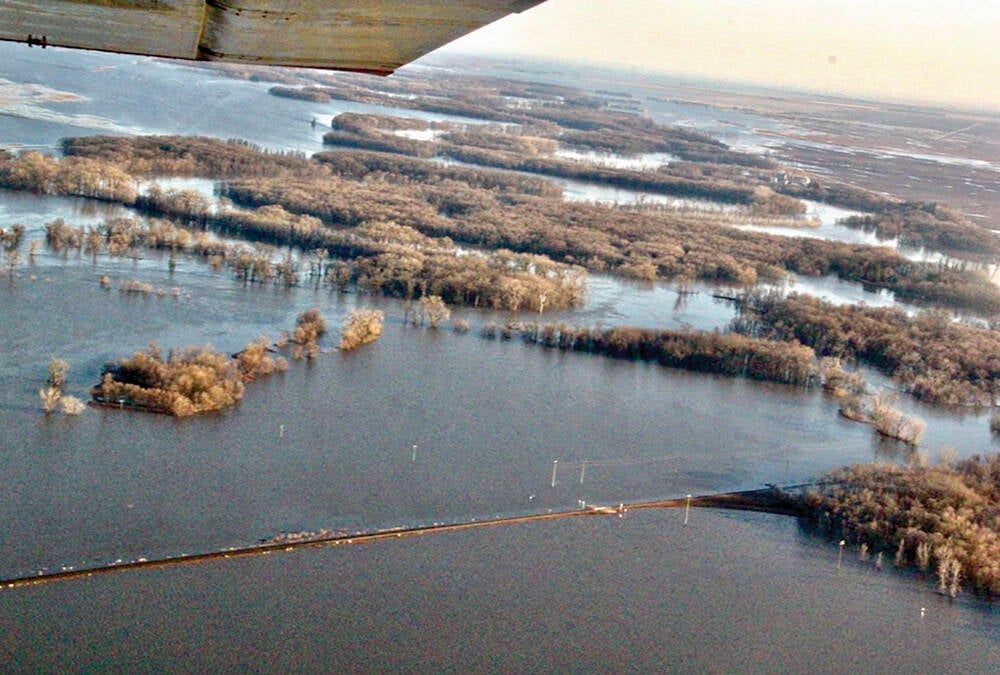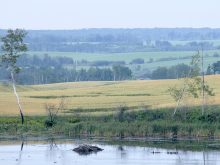Eighty percent of students are working with teachers remotely as they make supplemental education packages available
Saskatchewan students, teachers and families are receiving good grades as they adjust to school closures and home-schooling demands resulting from the coronavirus pandemic.
“Everyone is trying to do the best that they can in a very difficult, unique and rapidly changing situation,” said Kyle McIntyre, director of education at the Chinook School Division based in Swift Current.
“The thing that really impresses me is that people are solution focused. People aren’t whining and complaining … and moaning about stuff. People are finding a way to get things done in a very difficult circumstance,” he said.
Read Also

Rural Manitoba resources slim on natural disaster planning
A study from Brandon University’s Rural Development Institute has found that many rural and small municipalities don’t have the staff or resources to make formal climate plans against natural disaster.
It’s been more than a month since the crisis hit home in Saskatchewan schools. Like a spring blizzard, changes have swept over the educational landscape.
The week of March 9 saw all schools closed and face-to-face education in the province suspended indefinitely.
Since then, the province and school officials set up an educational response planning team to establish guidelines designed to meet the learning needs of all school-aged students.
McIntyre said all students from kindergarten to Grade 9 in all 27 school divisions in the province are receiving supplemental education.
During the last week of March, kindergarten to Grade 9 teachers were tasked with phoning each student’s family to determine what support they wanted for their children’s education.
“We found out that most families wanted to have some kind of a supplemental learning package. It would be teacher organized, teacher planned and teacher delivered to families,” said McIntyre.
“We built a resource that we sent to all parents last Friday (April 3) and that outlines roles and responsibilities of teachers and schools and parents and students.”
Teachers of kindergarten to Grade 9 connect with families each week.
High school teachers also contacted student families and provided options.
“Every student was guaranteed the mark that they presently had (March 13) in a course moving forward. So if a student had a 68, he or she would be guaranteed that particular mark, whether they continued with high school programming and education or not. If a student was failing a course they were guaranteed a 50,” McIntyre said.
Students could keep the marks they had when schools closed and not have it reduced, but they could continue studies if they wanted to improve it.
McIntyre said 80 percent of students chose to continue their education and improve their marks.
“It’s outstanding. We were anticipating about 60 percent of high school kids will continue…. Probably most kids, if you gave them a choice, would rather do nothing. But we were pleasantly wrong, which is awesome,” he said.
McIntyre said many parents have also stepped up to embrace the change, particularly kindergarten to Grade 9.
The situation has created an opportunity for families to take a more active role in their children’s education.
“I’ve seen some pretty hilarious posts on social media about that changeover. Some who are embracing it and some who are definitely not embracing it,” said Darren Gasper, superintendent of education at the Sun West Distance Learning Centre in Kenaston.
“I think this is a great opportunity to spend some quality time with your kids. So part of that will certainly be in learning, but an awful lot of learning can happen at home that isn’t formal school-based, that is very beneficial to kids.”
However, adequate bandwidth for reliable internet access presents a challenge in many rural areas, as is computer access.
Teachers must plan the learning activities accordingly.
“There’ll be students experiencing different learning methodology. There’ll be teachers looking at providing teaching and learning and giving families feedback and in very different manners. Some teachers are quite comfortable with that stuff. Some aren’t,” said McIntyre.
In some cases it’s business as usual, however.
“If I compared what the students are doing right now and I went back two months, I would say it’s almost status quo,” said Jeff Boulton, principal of Prairie South Virtual School in Moose Jaw.
“The students that are ahead are still ahead. And the students that were needing a lot of support, guidance and encouragement still require that. They’re in the course working, but they still need the encouragement to keep going with it and to try to stay with the course.”
Added Gasper: “For us in the online world not a lot has changed. We are carrying on much like we did before.”
Unlike traditional brick and mortar schools where the curriculum is delivered face to face, distance learning relies on a digital platform to deliver information between teachers, students and parents.
Many rural high schools do not have access to a variety of courses so they have been using distance learning for years.
“A lot of students do the online learning at school. So there’s the odd student that doesn’t have the computer at home to do the work on. So they have their phone and typically somebody’s got a phone and they can access the whole course. And there’s a really nice app for that, so that’s not a problem,” said Boulton.
“Every (high school) student in our rural areas has the opportunity to take one online class. So this won’t be a total shock to them. But definitely our elementary and middle year students, this will be new to them.”
While the current crisis has forced many educators to adapt their methods of teaching, Boulton said many classroom teachers already use the internet and electronic tools and apps on a regular basis.
“The toughest part for students is the self-motivation and the drive to do it. If they can be self-starters and manage their learning, if they can learn that and develop those skills, that’s going to really benefit them for future.
“The time we’re in, we’re fortunate to have the resources, the technology that we’re able to provide students to continue their learning.”















